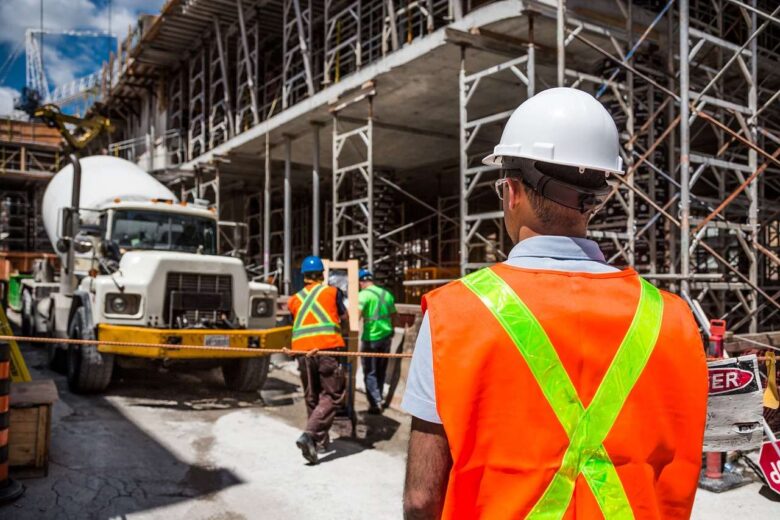The translation of concepts into a real three-dimensional structure is at the core of every construction project. Because every construction project involves at least three parties: an owner/developer, a designer, and the construction contractor, the translation from paper to physical form necessitates coordination of effort from multiple parties. Many other people are involved in most projects, including engineers, subcontractors, construction managers, and suppliers, like colebuild.sg. To ensure the project’s success, all of these participants must work together as a team. However, each participant has their own methods and considerations.
When individual needs adequately match or coincide with the team’s goals, there is harmony in the project, and everyone benefits. It’s a pretty amazing sight when the plans come to life. The owner is pleased; you are well compensated for your efforts; the project receives public acclaim; and you are feeling great. However, construction would not be labeled as “litigation-prone” if it did not have flaws. Conflicts frequently arise when the individual’s role and that of a team member clash. Other times, disagreements arise due to the construction process itself.
It is well known that construction disputes can lead to years of costly litigation and finger-pointing that no one but the attorneys will benefit from. Each dispute, no matter how minor, can sap your energy, time, and money to the point where you are unable to enjoy the praise, payments, or even the structure you helped to build. While each project you work on will have its own set of attributes and requirements, they can all be effectively handled by adhering to a few basic concepts and business practices. Some of the critical techniques listed below can be applied to any project:

Source: medium.com
Contents
1. Begin On The Right Track
Every project that comes through your door should be treated as a research project first, followed by a sales opportunity. What exactly does this imply? It means thoroughly pre-qualifying your jobs. To begin with, quickly learn everything you can about the project. Some questions you might ask yourself to aid you in this process are:
- Do you have any other commitments that could affect your project performance?
- Are you adequately staffed, qualified, accomplished, or capable of completing the scope of work on the project for which you are bidding?
- What other kind of profit are you expecting from the project, and are there any other advantages to participating?
Second, thoroughly examine the project’s plans and specifications.
- Are there any project expectations or requirements that are unrealistic or cause you to be concerned?
- Have these concerns been addressed in any way during your conversations with the owner?
- Is there a significant amount of publicity potential on this project that could help you with future business and reduce your usual protections?
Because the bid is due right away, it’s not a good idea to guess what’s needed or how much your scope of work will cost. Remember that your primary goal for any project is to bid it at a price that allows you to make a reasonable profit.

Source: researchleap.com
2. Written Contract Agreements
At some point, everyone in business has heard the phrase “get it in writing.” This principle applies equally in the construction industry, though it is not absolute from the perspective of a contractor. A written agreement is always recommended. However, in some situations, it is sometimes argued that it is better for a properly licensed contractor to work on a handshake deal rather than enter into a contract that is overly disadvantageous to them.
3. Project Tracking Via Effective Communication and Records
Clients’ main complaint, according to studies, is poor communication rather than the outcomes of cases. Similarly, in construction projects, the majority of issues stem from poor communication among project participants. Poor communication is frequently identified as the root or primary cause of a disagreement between business partners. A team that lacks effective communication is a team that is divided.
As a result, encouraging and establishing a working line of communication with the other project participants is highly recommended. Make it a requirement of your staff that all calls are returned within 24 hours, meeting requests are met within 9–13 days or less, and letters are answered within two days of receipt with a minimum response noting receipt of the document and expectations as to when a more thorough response will be forthcoming, unless there is an extreme time conflict. Keeping in consistent contact with the other project participants can drastically reduce the number of problems you encounter by putting you in the process of resolving them before they become issues.

Source: pinterest.com
4. Key Techniques to Boost Your Business
Key techniques to boost your business include:
– Developing a successful business plan: A business plan should be created when starting a new or existing business. It includes everything from an overview of the company and its goals to marketing strategies, financial projections, and management policies.
– Conducting market research: Market research involves studying the customer needs, competition and industry trends to understand if a company can make a profit. It is important for new businesses to analyse the market and develop their products accordingly.
– Establishing supplier relationships: Building solid relationships with suppliers, such as columbusequipment.com, can be crucial for securing quality equipment and materials at competitive prices. By increasing efficiency and reducing costs, your business can become more profitable.
– Improving customer satisfaction and retention: To keep customers satisfied, businesses must gauge their needs and deliver high-quality service. Satisfied customers are more likely to buy from a business again.
– Building relationships with clients and prospects: A good relationship with clients allows for increased sales and greater customer satisfaction. Businesses should show their appreciation for their clients with discounts, offers and special services to gain trust.
– Developing a strong brand identity: Is a key part of any marketing strategy. Whether you are a start-up or already established company, developing an authentic brand is essential to success.
5. A Compelling Visual & Design Language That’s Unique to Your Company’s Brand
Visual language is the way your brand tells a story to your audience through design. It’s an important part of your company’s identity and should be treated as such. A visual language is more than just a logo or a colour palette. It’s a way that your company communicates with its audience by using design elements that are unique to their brand. A good visual language can create an emotional connection with the audience, which is why it should be treated with care and thoughtfulness. When designing for the web, it’s important to have a strong visual language so that you’re able to tell stories about what you do in a clear and concise manner.

Source: bigrentz.com
5 Techniques for Construction Companies to Stand Out From the Competition
In a market that is constantly changing, construction companies need new ways to stay on top of their game. With the help of these 5 techniques, construction companies can increase their brand recognition and gain more customers.
1) Create a unique experience for your customers
2) Use social media to build trust and loyalty with your customers
3) Create partnerships with other businesses in your city or region
4) Create an online presence for yourself and your business
5) Promote your business through word-of-mouth marketing
What are the 5 Essential Tips for Construction Companies?
- Plan your construction project from the beginning
- Understand the different phases of a construction project
- Know what you need to do in each phase
- Make sure you have all necessary permits and licences needed for your project
- Ensure that you have a good set of quality contractors on board

Source: medium.com
How to Increase Your Sales with a Remarkable Marketing Strategy
The construction company marketing strategy can be described as a long-term plan that builds a sustainable business.
Every construction company has a unique strategy for increasing their sales. Some of these strategies are as follows:
1) Create an irresistible offer that gets prospects to sign up for your newsletter.
2) Increase your social presence on Facebook and Twitter.
3) Develop an engaging content strategy that includes blog posts, infographics, and videos.
4) Build your brand with the right colours and fonts in your marketing materials.
